Painting How To
Step-by-step oil painting process for Meyer Lemons
Meyer Lemons Painting Tutorial
STEP 1: The setup
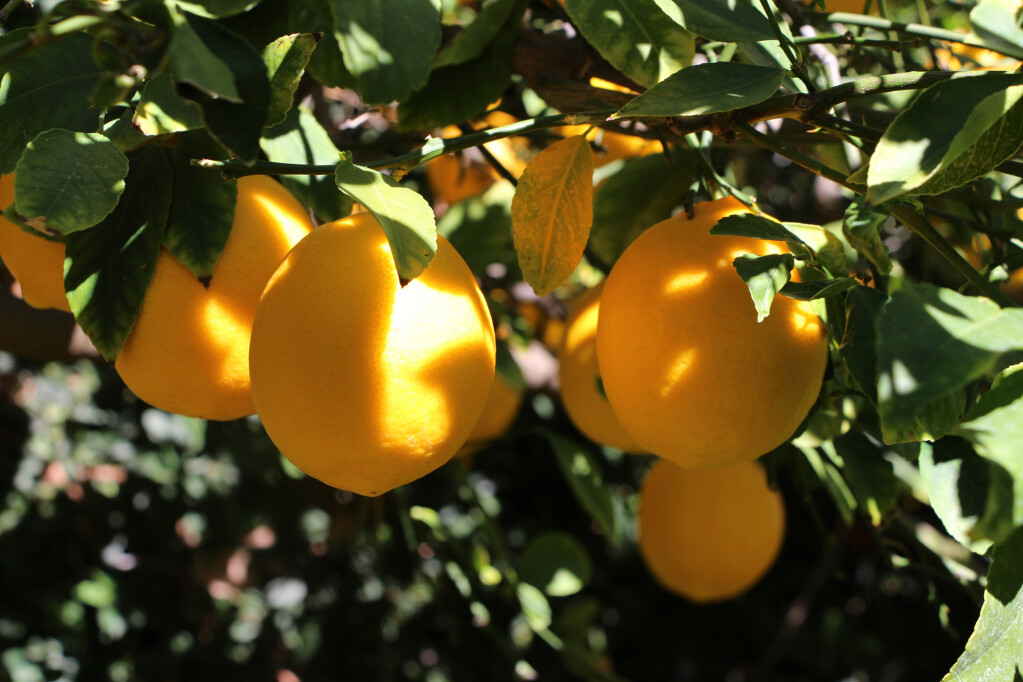
Meyer Lemons. What wonderful fruit. They are slightly warmer in color and sweeter in flavor than conventional lemons. We picked these lemons, put them on a wooden tray lit by the sun from our kitchen window. The plan was to make margaritas with their sweet and tart juice, but as often happens in my life, this fleeting moment inspired me to make art. I grabbed the camera and took a few shots. Yes, we did make the Margaritas. They were delicious.
Goal: Celebration of light and texture
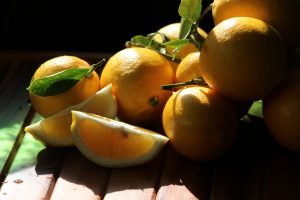 I define my goal for the painting before I start. What I wanted to say about these Meyer Lemons is how the sunlight is captured and stored by these uniquely sweet lemons. Throughout the process, my goal is to make this primary idea clear, so it’s essential that I avoid leaving anything out or put anything in that makes the idea vague. Of course, most important consideration is to create a painting that’s as beautiful and arresting as the lemons were when I first saw them.
I define my goal for the painting before I start. What I wanted to say about these Meyer Lemons is how the sunlight is captured and stored by these uniquely sweet lemons. Throughout the process, my goal is to make this primary idea clear, so it’s essential that I avoid leaving anything out or put anything in that makes the idea vague. Of course, most important consideration is to create a painting that’s as beautiful and arresting as the lemons were when I first saw them.
STEP 2: Drawing on canvas
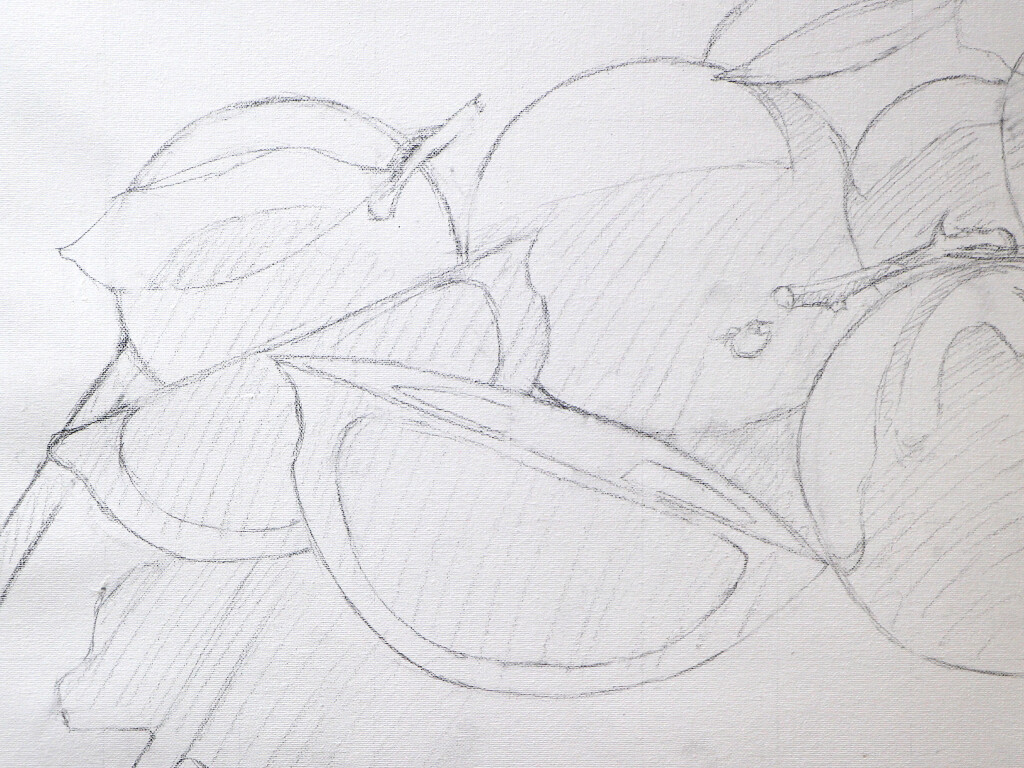
Time to explore
I begin by drawing directly on the canvas with a 3B pencil. Drawing freehand helps me explore the composition and get better acquainted with the elements and their relationship to each other. I pay close attention to the rhythm, placement, and orientation of the lemon slices. Spray fix is applied to hold the drawing in place.
Freehand only – no tracing
Although I often use photographs for reference, I always draw my subject freehand and never trace. I find the results of tracing to be lifeless and it doesn’t challenge me enough to understand my subject. In contrast, freehand drawing encourages me to explore, alter the composition, and get much better understanding of all its elements and their relationship to each other. I get a feel of the rhythm of both the placement of elements and their orientation – the directions they lean and how that rhythm creates interesting movement.
STEP 3: Blocking-in with Burnt Umber
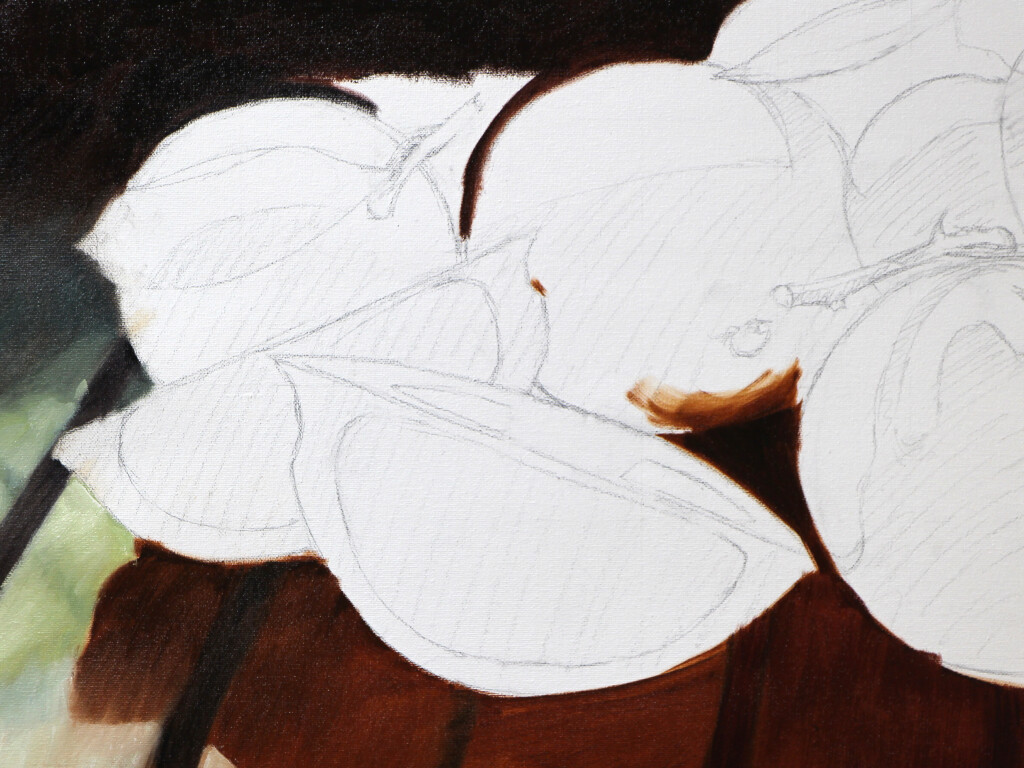
Focus on the large dark shapes
Continuing the “drawing” stage, I add form and shadow. For the background, I use a mixture of Alizarin Crimson and Ultramarine Blue, making it cool and dark. With warm light bouncing around the base of the lemons, I paint the foreground shadow with Burnt Umber warmed with a small amount of Transparent Red Iron Oxide. Care is needed here to not over-saturate that warm color so it won’t fight with the colors of the fruit.
STEP 4: Block-in With More Color
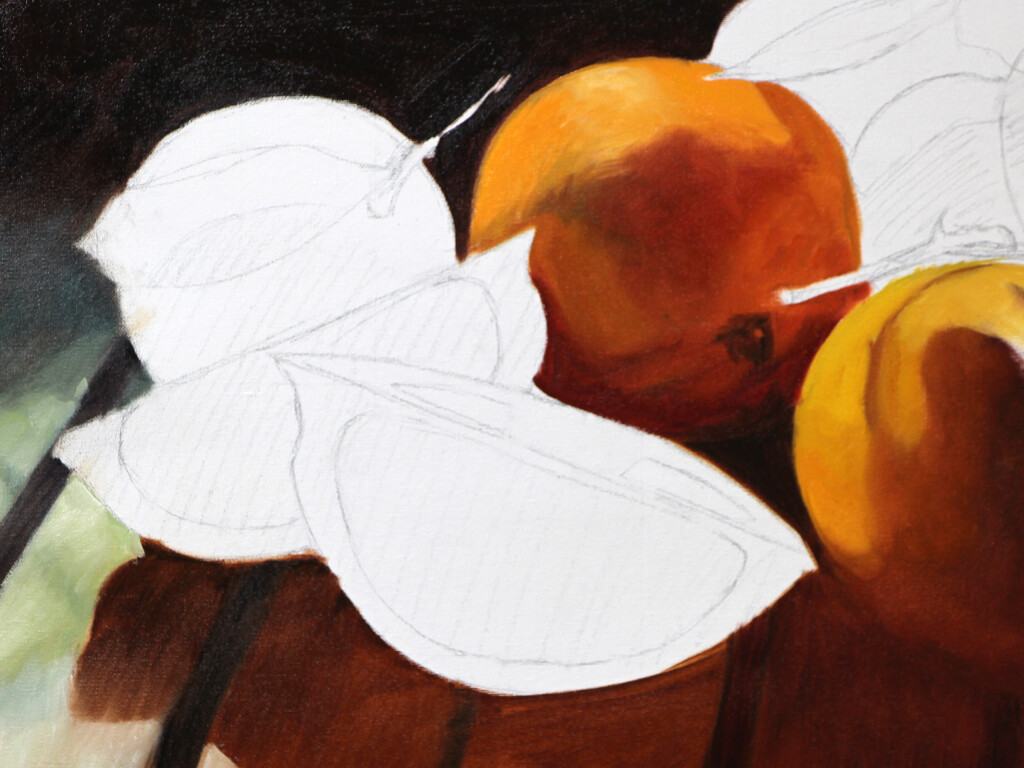
Working from the background forward, I block in the midtones. I add a hint of the blue-green cast by the leaded glass window. That color, a near complement to the lemon’s colors, will help give the lemon’s warmth more intensity.
STEP 5: Block-in complete
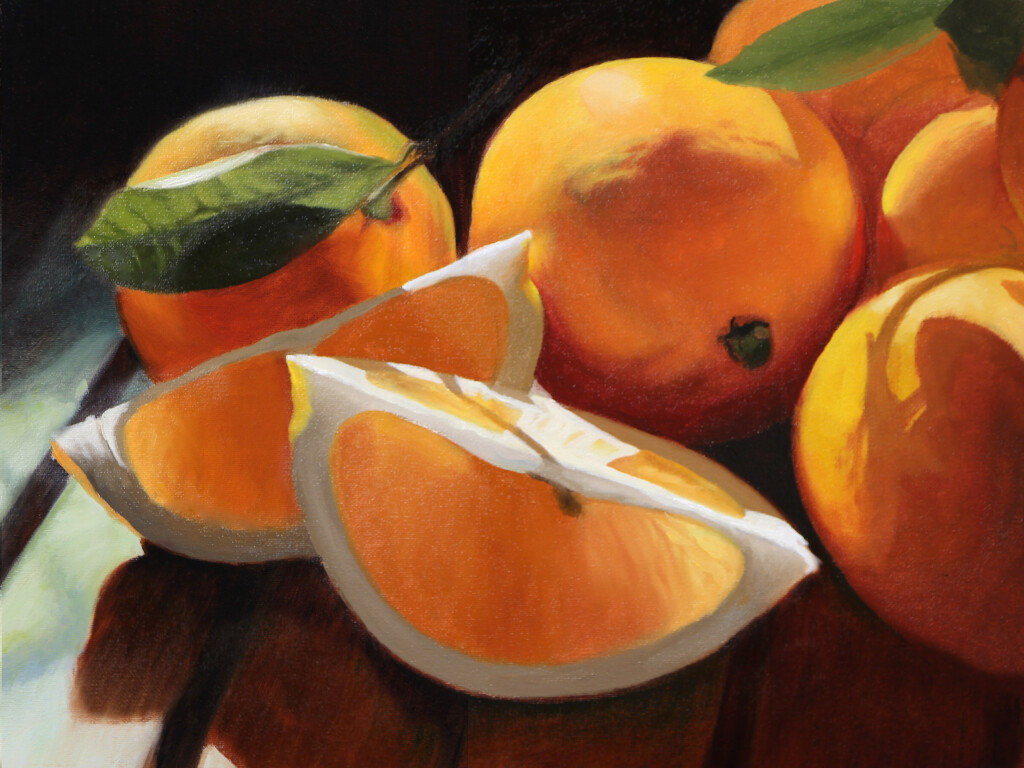
Block-in finished, now what?
With shapes, colors, and values in place, I refine them by blending middle tones, deepening the shadows, adding details, and laying in highlights. The lemons are built with transitions of Cadmium Yellow Deep and Cadmium Orange. Their shadows are glazes of Transparent Red Iron Oxide and Alizarin Crimson; the highlights are cool gray tones. The cool grays enhance the vibrancy of the yellows.
STEP 6: Finishing Detail
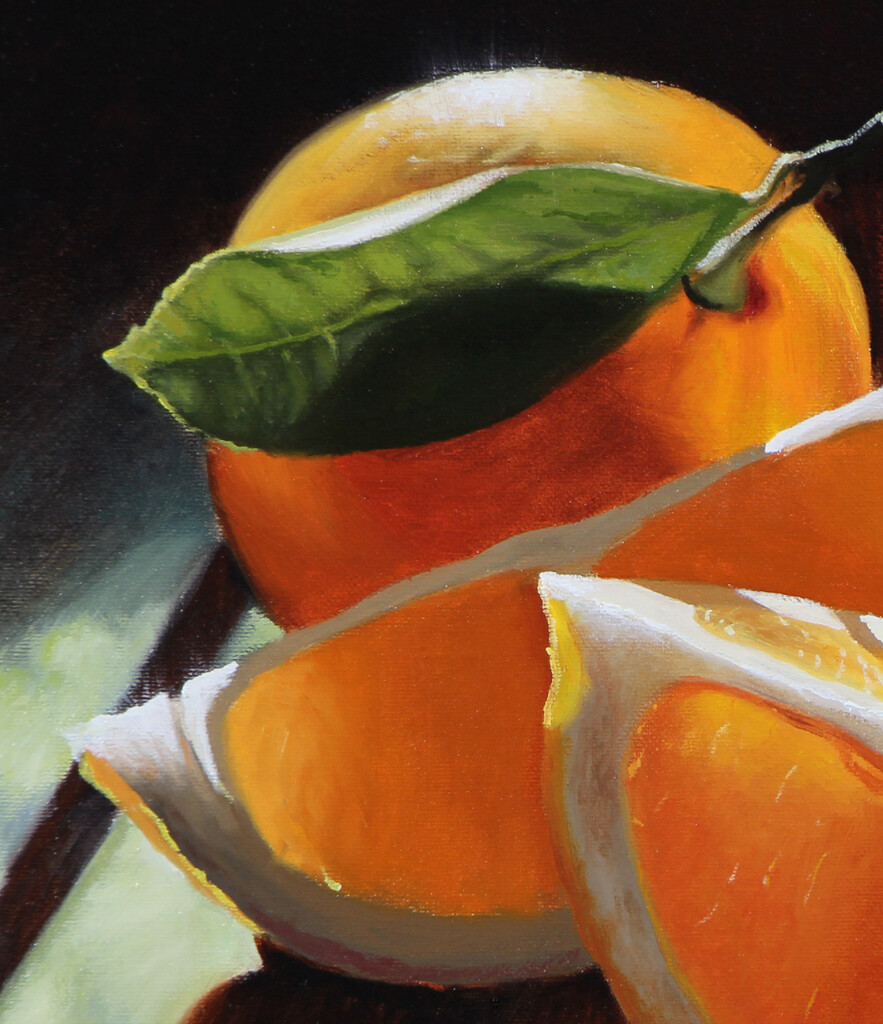
I build up the value contrast between the background and foreground lemons. Color saturation contrast between the background and pulp in shadow is also increased. The highest saturation is in the areas of greatest translucence – the light through the leaves, and the light through the juicy lemon slices. I use bright highlights sparingly. Thin lines of light green define the leaf edges making them look 3D and thin. The juiciness of the fruit is enhanced by very thin highlights of white along the slice edges and a few of the lemon cells. The last touch is a quick vertical stroke over the wet highlights with a soft fan brush to add soft edges to highlights against the deepest background color.
STEP 7: Finish – my favorite part
Refining through blending middle tones, deepening the shadows, adding details and highlights. Note that the highlights at this stage are not pure white. I only use pure – or close to pure – white as my final strokes.
Short video sequence to see how Meyer Lemons was created.
If this tutorial has been helpful, please like, share or subscribe.
GREAT RESOURCES
These books have a treasured place in my studio.
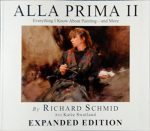 Alla Prima II Everything I Know about Painting and More
Alla Prima II Everything I Know about Painting and More by Richard Schmid
Alla Prima, this book offers to the artist and art lover alike the wisdom and technical savvy which comes from a classical education and a lifetime of painting and teaching. Writing as an acknowledged master, Richard gracefully leads his reader through the subtleties of painting theory and technique with refreshing directness and unmatched technical authority. With an emphasis on painting from life, he writes with warm humor about the joys and trials of being an artist. He brings to life the romance of Bravura painting and examines the mysteries of color in fascinating detail.

by Juliette Aristides
Lessons in Classical Painting presents aspiring artists with the fundamental skills and tools needed to master painting in the atelier style. With more than 25 years of experience in ateliers and as an art instructor, Aristides pairs personal examples and insights with theory, assignments and demonstrations for readers, discussions of technical issues, and inspirational quotes.
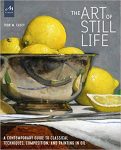 The Art of Still Life
The Art of Still Life by Todd M. Casey
The Art of Still Life offers a comprehensive, contemporary approach to the subject that instructs artists on the foundation basics and advanced techniques they need for successful drawing and painting. In addition to Casey’s stunning paintings, the work of over fifty past and present masters is included, so that the book is both a hardworking how-to manual and a visual treasure trove of some of the finest still life art throughout history and today.
Materials
Stretched Canvas – acrylic double primed
Paints (M Graham)
In the order arranged on my palette
M Graham Walnut Oil Paints
Alizarin Crimson
Cadmium Red
Cadmium Yellow Deep
Cadmium Orange
Cadmium Yellow Light
Titanium White (quick drying)
Veridian
Ultramarine Blue
Ivory Black
Varnish (for restoring color brilliance)
Blair Retouch Varnish
Medium
M Graham Walnut Alkyd Medium
Gamlin Aylkyd Gel Medium
Brushes
Rosemary and Co. Brushes
Evergreen Synthetic
Hogs hair bristle
Other Tools
4B Graphite Pencil
Kneaded Eraser
Metal ruler straight edge
Reducing Glass
Palette Knife (only for mixing)
Other Materials
Paper Towels
Turpenoid Natural
Master’s Brush Cleaner

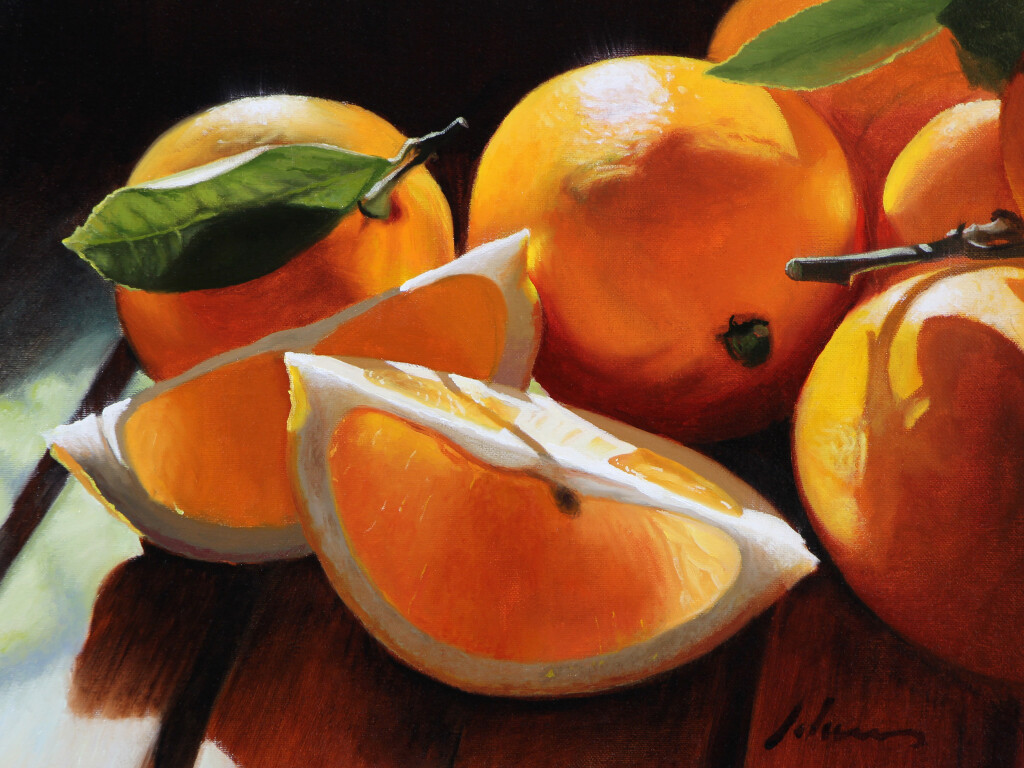
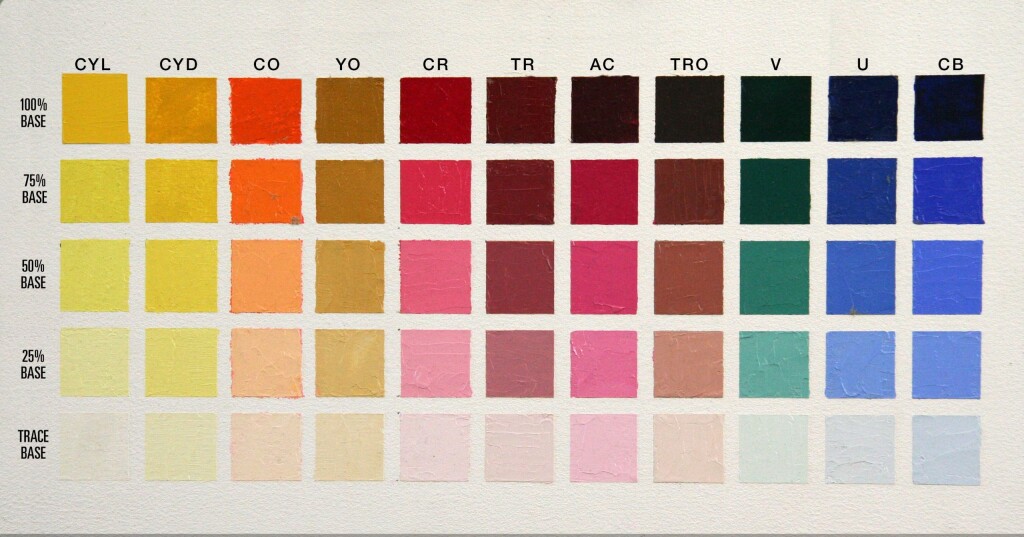
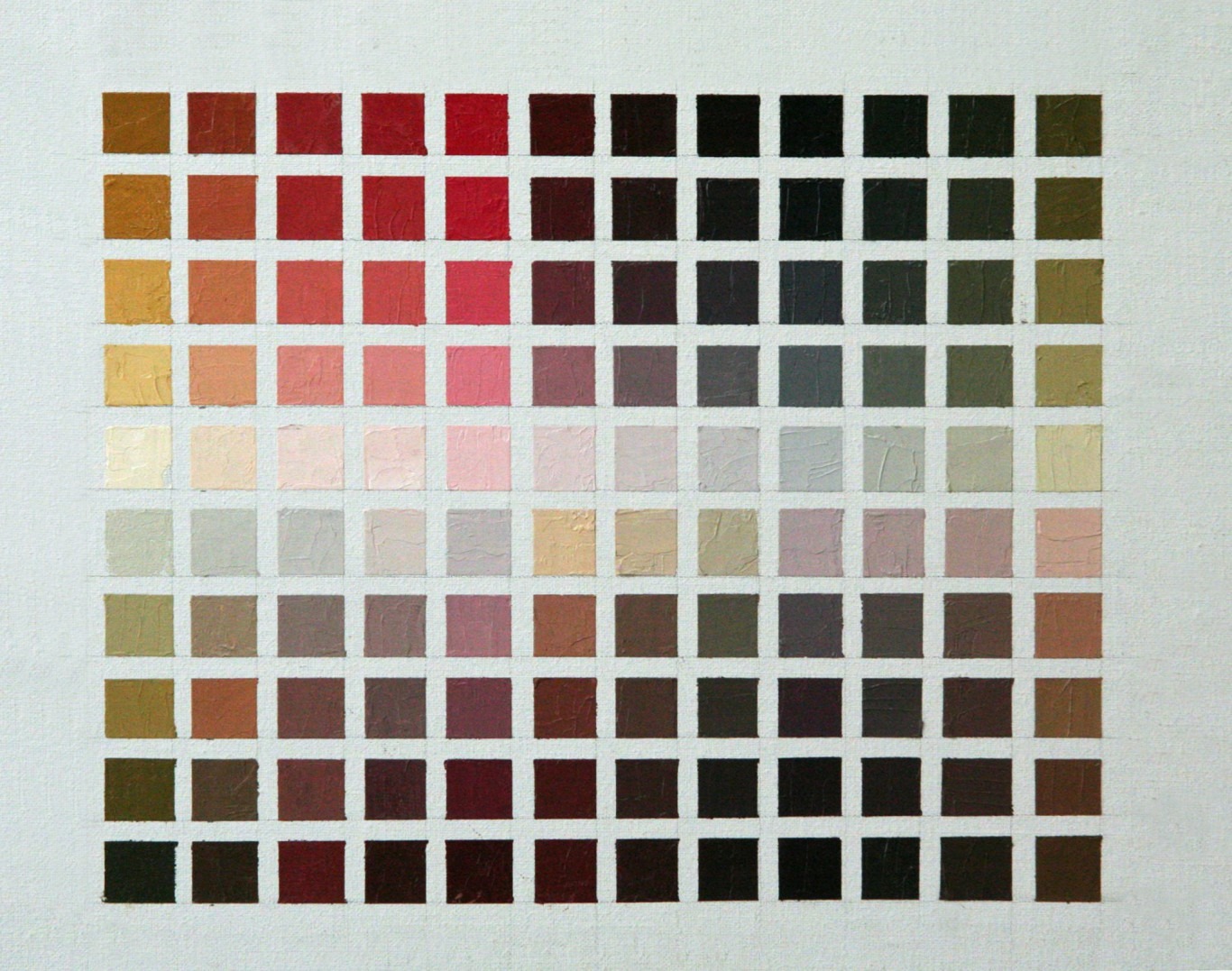
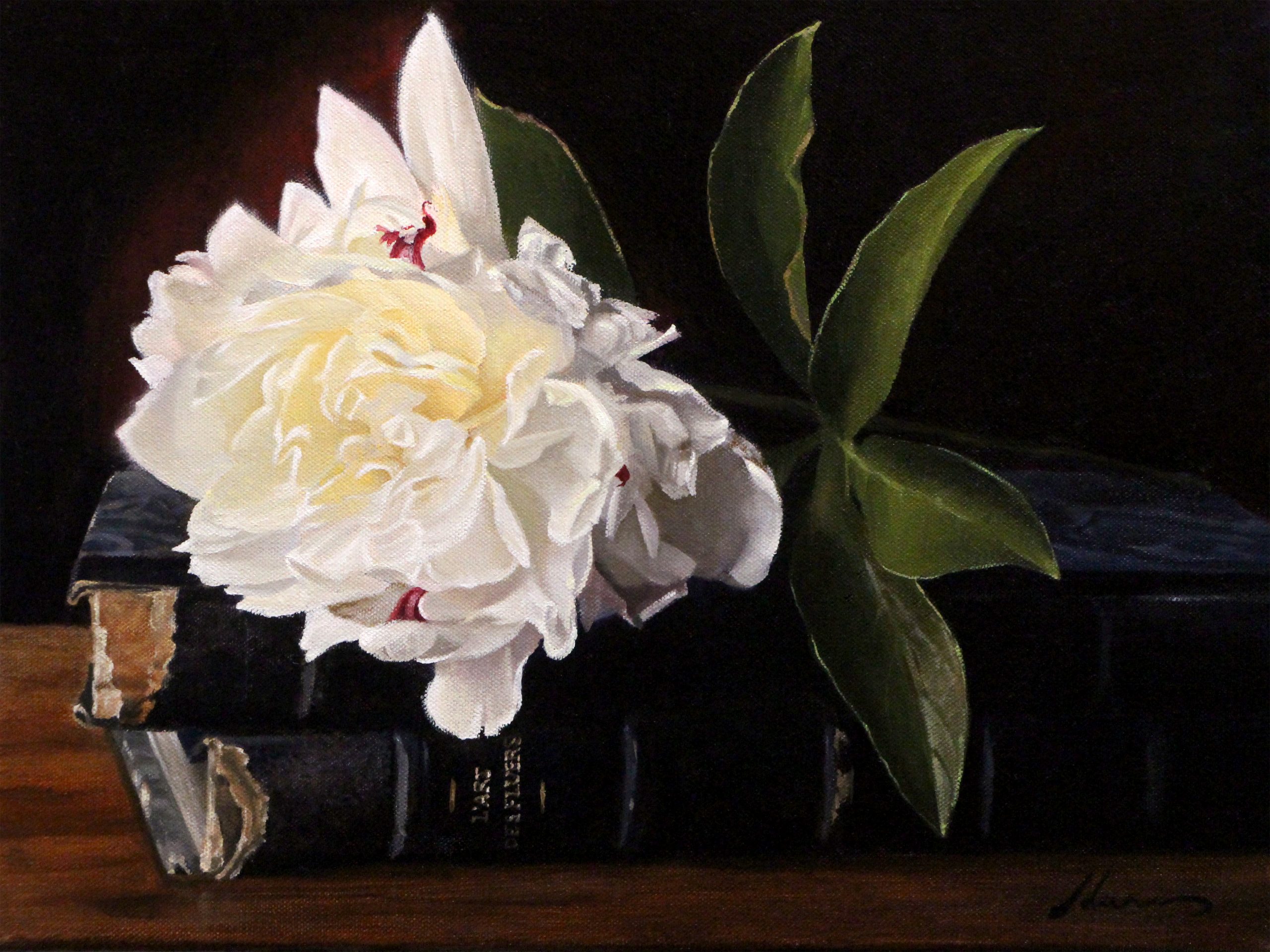
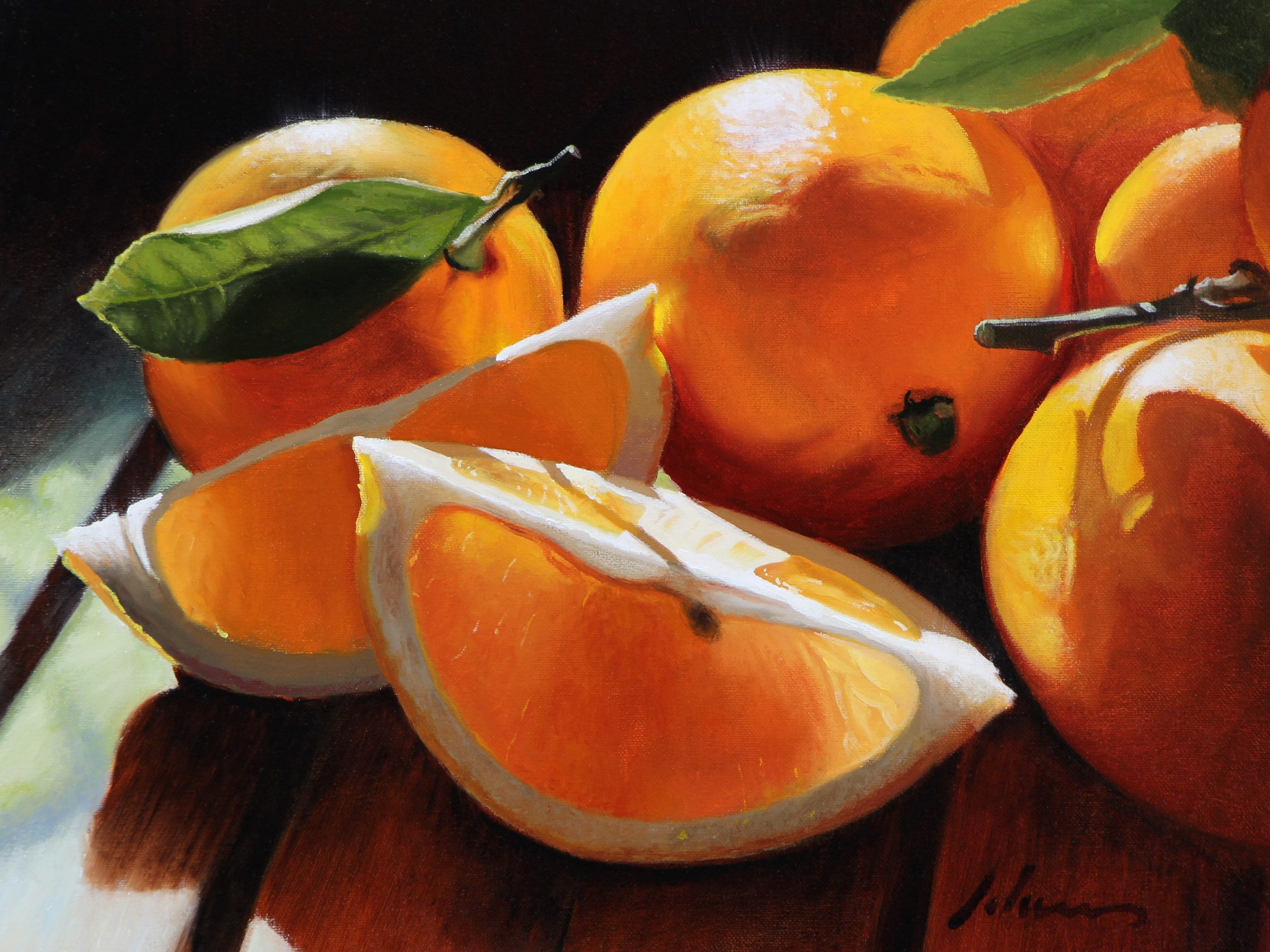
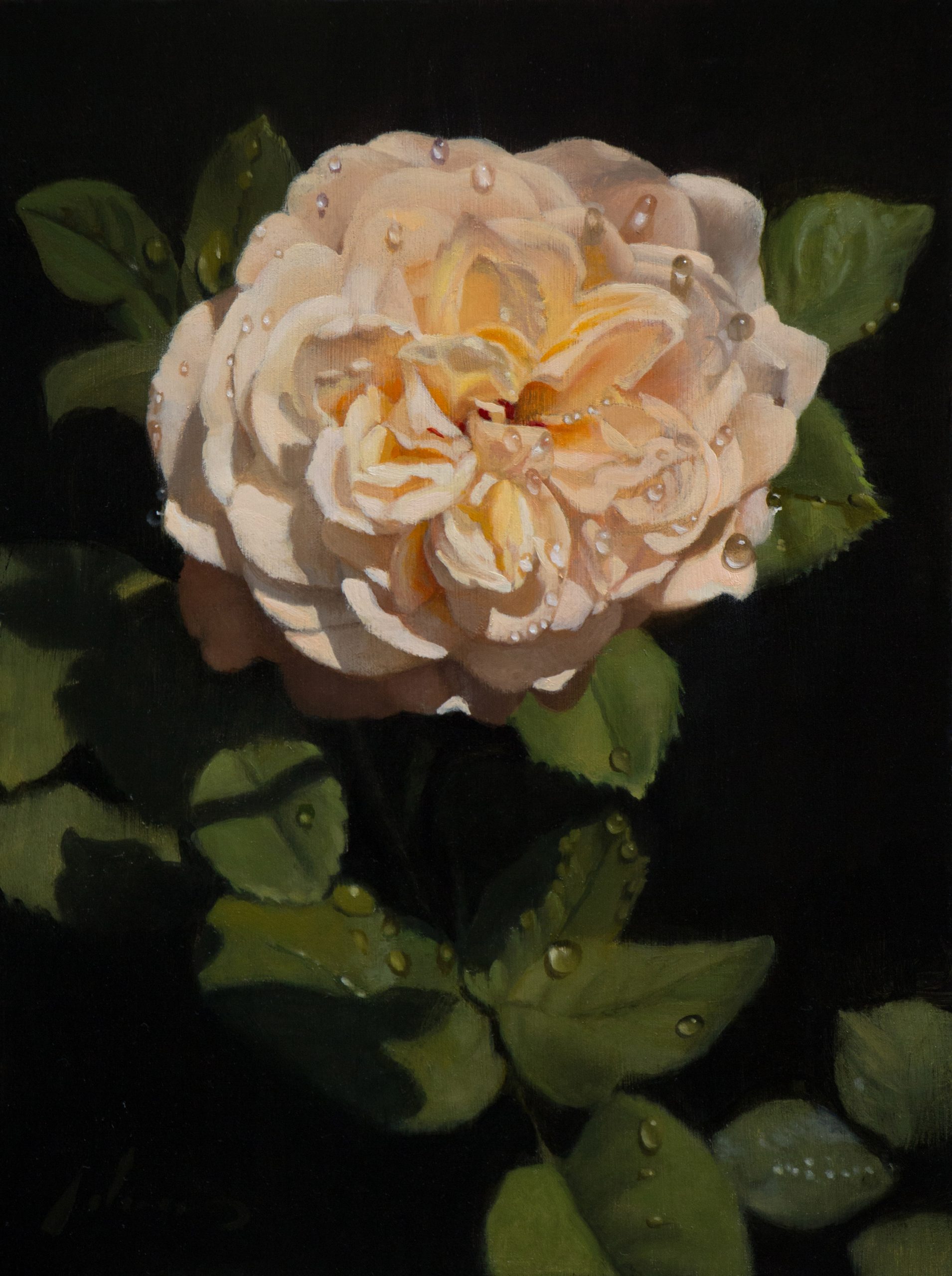
I like the way you described the painting simple step by step. As a beginner I found this most helpful. I personally would like more stills of say old cabins, etc simplified for the beginner.